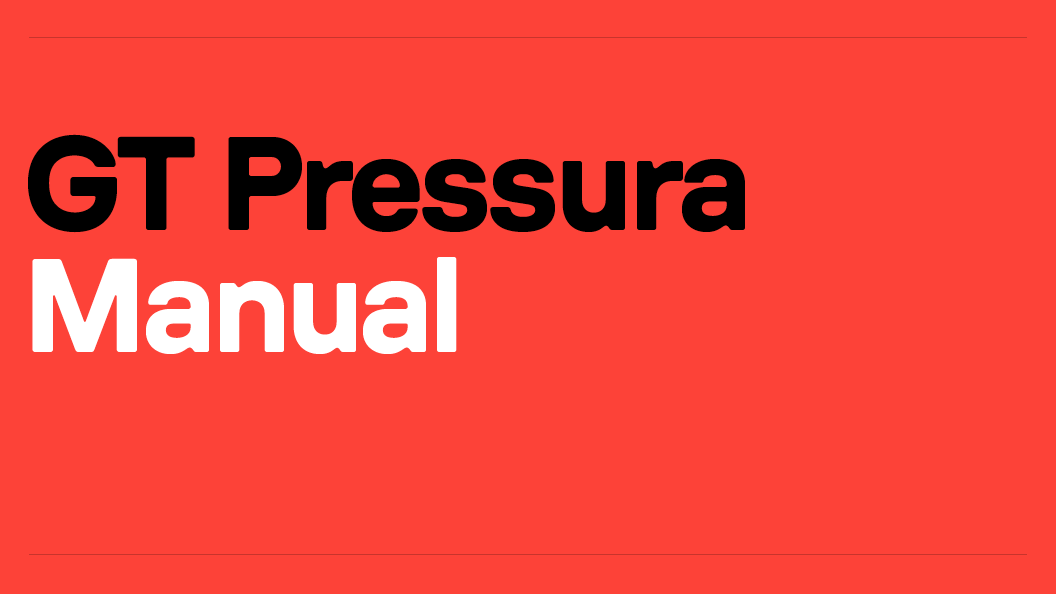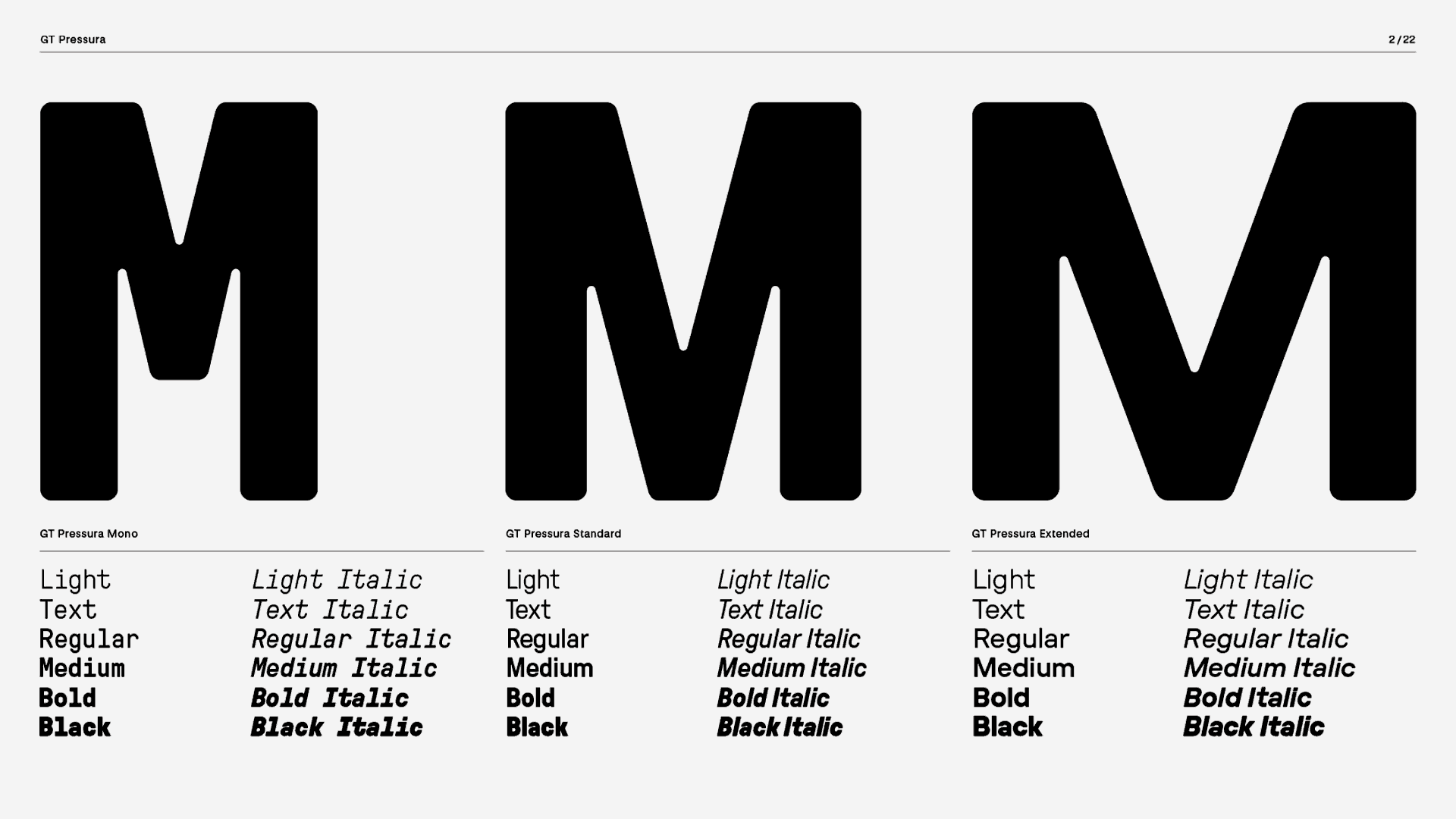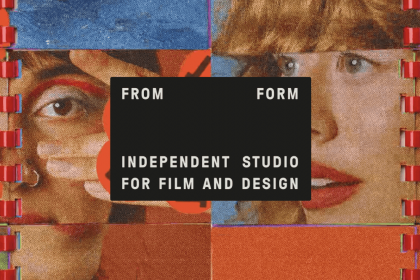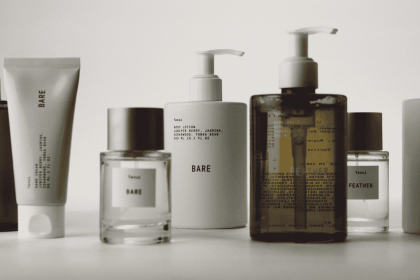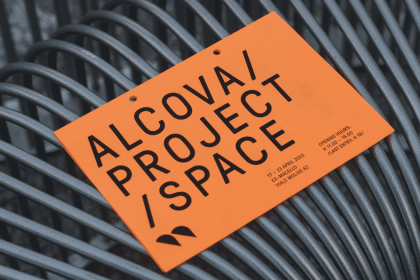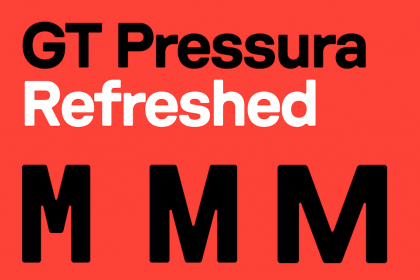GT Pressura
Family overview
- Standard
- Light Italic
- Text Italic
- Regular Italic
- Medium Italic
- Bold Italic
- Black Italic
- Mono
- Light Italic
- Text Italic
- Regular Italic
- Medium Italic
- Bold Italic
- Black Italic
- Extended
- Light Italic
- Text Italic
- Regular Italic
- Medium Italic
- Bold Italic
- Black Italic
Subfamilies
- Standard LightWhy can’t we give love, give love, give love, give love, give love, give love, give love, give love?
- Standard Light ItalicUm ba ba be
- Standard TextDo Not Break Down Skid, Broken Pallets are a Tell Sign of Trouble or [even] Theft!
- Standard Text ItalicThese are the days it never rains but it pours
- Standard RegularA system was selected for Western Europe, based on the Netherlands' system for consumer goods and waste transportation called Laadkisten (lit. "Loading bins"),
- Standard Regular ItalicEconomy Storage File Boxes With LID S-4153 Letter/Legal 15 x 12 x 10" $.95
- Standard MediumEe day da – that’s okay
- Standard Medium ItalicIt’s the terror of knowing – What the world is about
- Standard BoldDo Not Break Down Skid, Broken Pallets are a Tell Sign of Trouble or [even] Theft!
- Standard Bold ItalicKeep coming up with love but it’s so slashed and torn
- Standard BlackSplits a family in two
- Standard Black ItalicFragile, Keep Dry (with Broken Glass & Umbrella Graphic) 18" Image, 24"×24" Sheet
- Settings
Typeface information
GT Pressura is inspired by metal type printing history as well as engineered letters stamped onto shipping boxes. It uses the visual gesture of ink spreading under pressure as a stylistic device, offering an alternative to more spindly typefaces of the digital age.
Typeface features
OpenType features enable smart typography. You can use these features in most Desktop applications, on the web, and in your mobile apps. Each typeface contains different features. Below are the most important features included in GT Pressura’s fonts:
- TNUM
- Tabular Figures
13.07.2048
- SS01
- Alternate a
React
- CASE
- Case sensitive forms
¿TE GUSTA?
Typeface Minisite
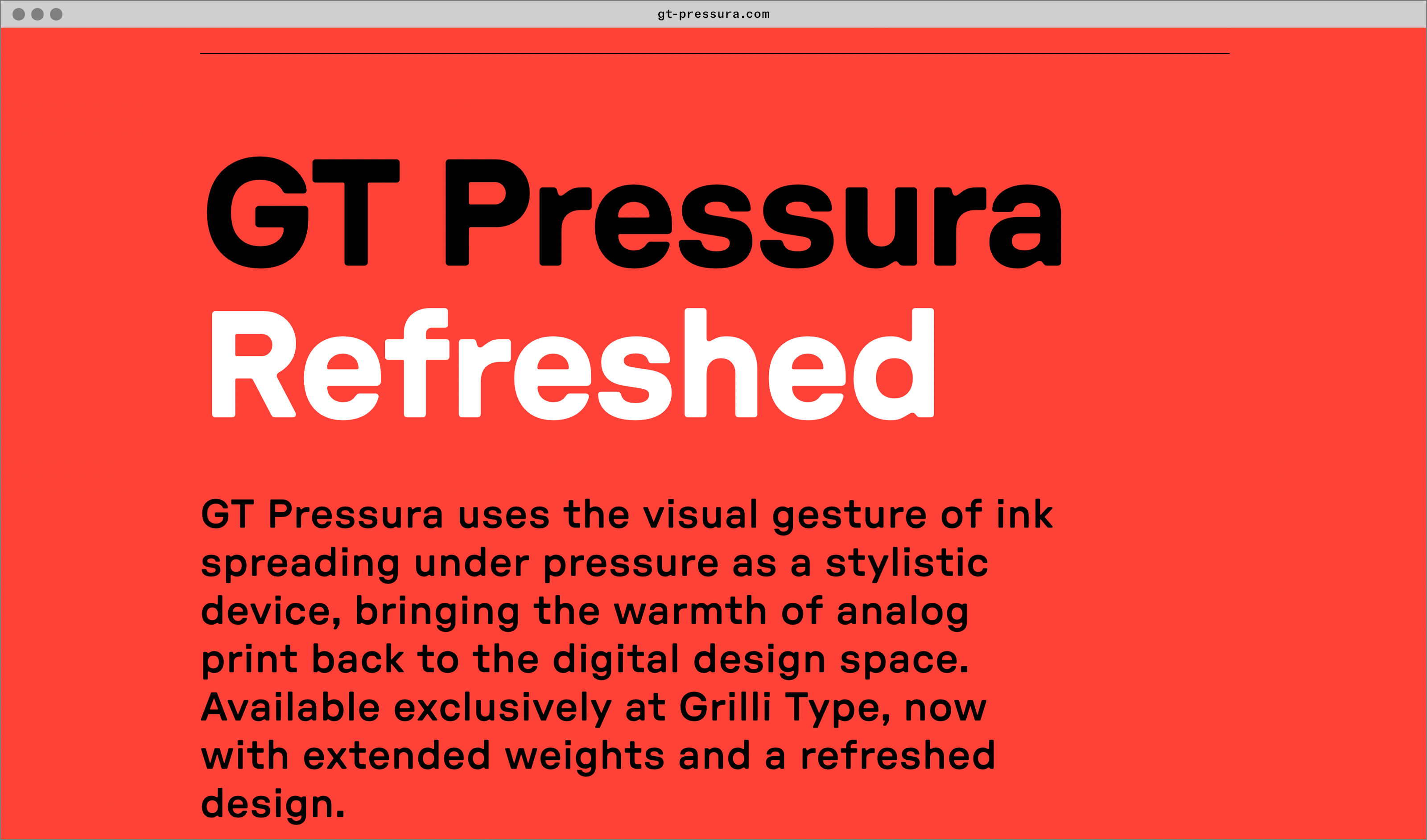
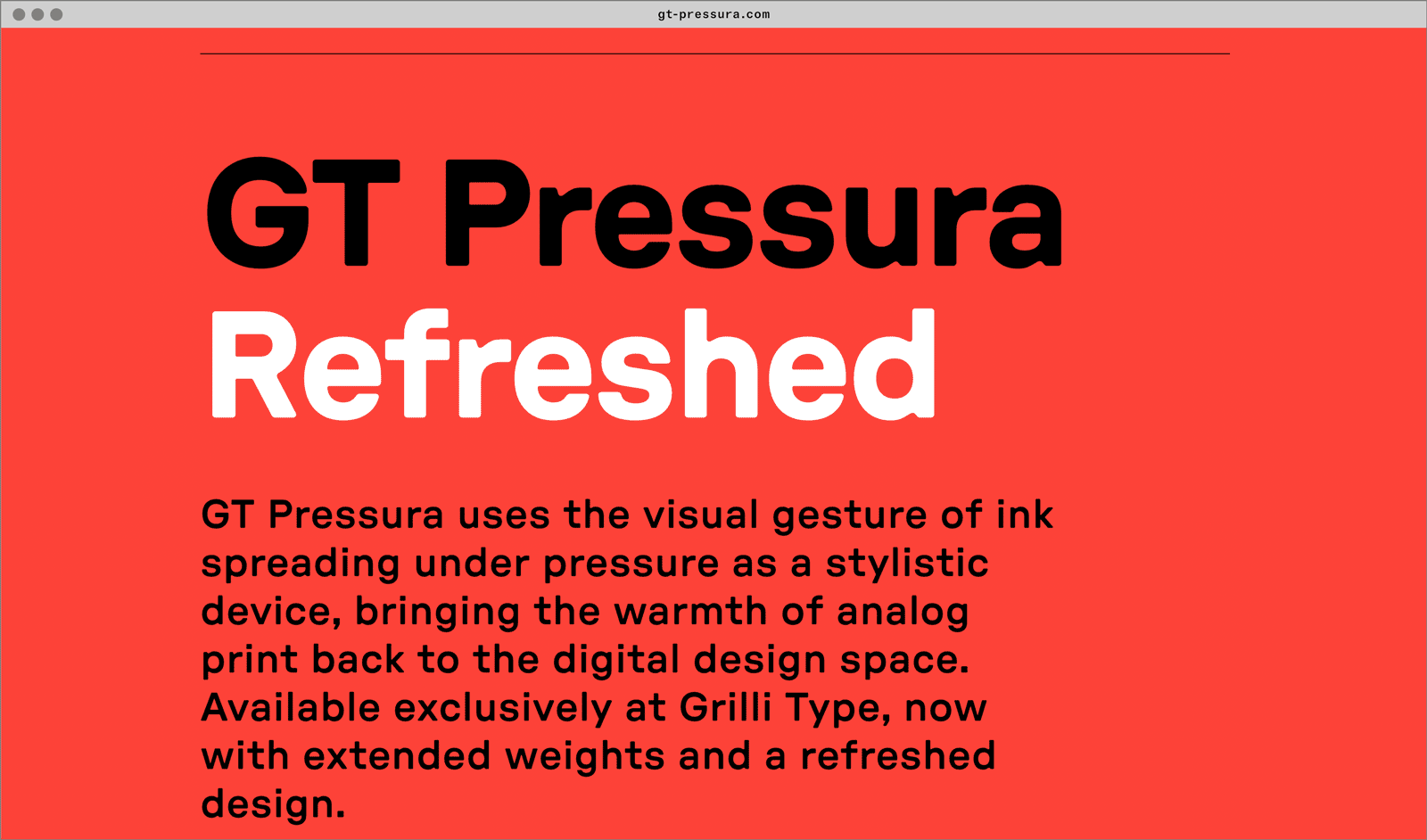
- Visit the GT Pressura minisite to discover more about the typeface family’s history and design concept.
GT Pressura in use
